When you have kids and pets at home, pest control can feel like a balancing act. On one hand, pests like ants, roaches, or rodents are unsanitary and can pose health risks. On the other, finding effective safe pest control methods that won’t harm your family can be just as concerning. As a pest control technician who has worked in countless homes, I understand these worries firsthand. In this guide, I’ll walk you through everything you need to know to keep your home pest-free while ensuring the safety of your little ones, whether they’re toddlers or tail-wagging furballs.
The Risks of Traditional Pest Control
Many homeowners start their pest control efforts with over-the-counter sprays or traps. While these seem convenient, they can sometimes create more problems than they solve.
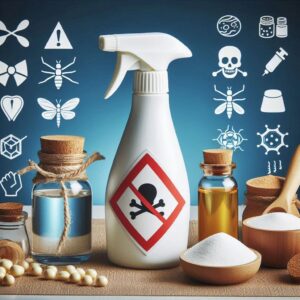
Harmful Chemicals
Traditional pesticides often contain chemicals that are effective against pests but harmful to children and pets. For example, I once worked with a family who used a DIY ant spray around their kitchen. Unfortunately, their crawling toddler touched the treated area, leading to a mild skin reaction. While everything turned out fine, it was a reminder of how easily accidents can happen.
Safe Pest Control Practices to Avoid Mistakes
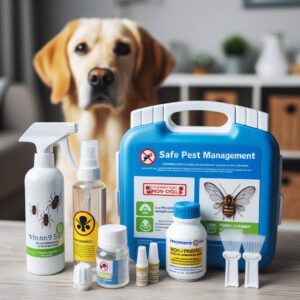
Homeowners sometimes leave traps or bait stations in areas accessible to kids and pets. A pet-safe rat bait, for instance, might not be harmful in small doses but could still cause discomfort if ingested. Similarly, placing sprays or dusts on counters or floors without considering correct application methods can lead to unintentional exposure. For more on pesticide safety and preventing exposure, the EPA’s Pesticide Safety Education Program provides valuable guidance for applications.
Signs of Exposure to Watch For
Common symptoms of insecticide exposure often resemble cold or flu-like symptoms. Rodenticide exposure is less common in humans but frequently affects pets. If you suspect your child or pet has been exposed to pesticides, watch for the following symptoms:
- Children (Insecticide Exposure): Skin irritation, runny nose, coughing, nausea, or difficulty breathing.
- Pets (Rodenticide Ingestion): Vomiting, excessive drooling, seizures, or lethargy.
If you notice any of these symptoms, contact a healthcare provider or veterinarian immediately.
How to Choose Safe Pest Control Solutions
Luckily, pest control doesn’t have to mean compromising safety. Here are some ways to tackle pests while keeping your home safe for everyone.
IPM: A safe pest control method that focuses on prevention
IPM focuses on prevention and targeted treatments rather than blanket chemical use. This approach identifies the root cause of pest problems and uses the least invasive solutions first. For example, cleaning a dirty drain where flies are breeding can often eliminate the need for chemical sprays altogether.
Eco-Friendly & Low Toxicity safe pest control products
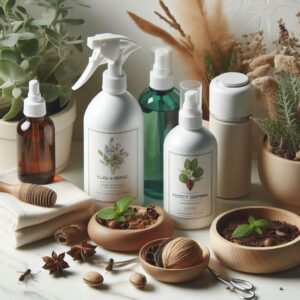
Over the years, there has been a noticeable increase in eco-friendly and pet-safe pest control products. These often use natural ingredients, such as essential oils or plant-based compounds, that repel pests without harming people or animals. To ensure a product is genuinely non-toxic, look for certifications like the EPA’s Safer Choice label.
If you prefer traditional products with lower toxicity, pay attention to the label’s “Signal Word.” Safer products are marked with CAUTION, while those with higher toxicity levels carry WARNING or DANGER.
Professional Treatments for Sensitive Homes
Professional pest control companies offer child- and pet-safe options. I worked with lots of families with children, infants, and pets without any incidents. We customize the treatment for targeted applications to minimize exposure.
Preparing Your Home for Safe Pest Control
Whether you’re tackling pests yourself or calling in a pro, preparation is key to keeping everyone safe.
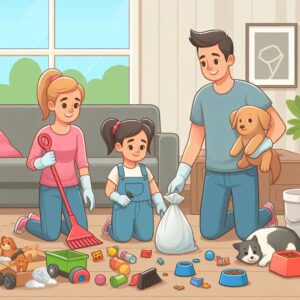
Before Treatment
- Remove Items: Put away toys, food, and pet bowls from treatment areas.
- Plan for Temporary Relocation: It’s usually best to keep kids and pets out of the house during and immediately after treatment. Though some products can be applied with people present.
- Communicate Concerns: If you’re working with a technician, let them know about any specific sensitivities or high-traffic areas like playrooms or pet beds.
During Treatment
If you’re handling pest control yourself, always follow the product’s instructions and label exactly as directed—it’s not just important, it’s the law. Over-applying pesticides or ignoring safety precautions can result in unintended exposure and potential harm.
Post-Treatment Safe Pest Control Tips
After a pest control treatment, a few extra steps can go a long way toward maintaining a safe environment.
Allow Safe Re-Entry
Most treatments need time to settle before the area is safe to re-enter. When using sprays, ensure the treated area is completely dry and well-ventilated before allowing children or pets back inside.
Clean Strategically
- Wipe down surfaces where food is prepared or consumed.
- Avoid cleaning treated areas like baseboards too soon, as this can reduce the effectiveness of the treatment.
Preventing Pests Safely
Prevention is the best way to minimize the need for pest control treatments. These simple steps can keep pests out without introducing chemicals into your home.
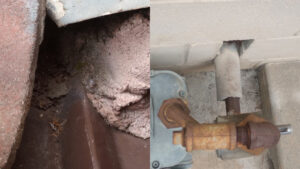
Seal Entry Points
One of the most effective strategies is to block off how pests get in. Inspect the exterior of your home for cracks, gaps, or holes around windows, doors, and pipes. I once helped a family who was dealing with a recurring rat problem. It turned out under their back deck there was openings large enough for a rat highway! A quick fix with steel wool solved the issue.
Clean Regularly
Crumbs and spills are a pest’s dream come true. A nightly wipe-down of counters and floors can make your home far less appealing to pests.
Natural Deterrents
Some safe, natural remedies can repel pests. For example:
- Ants: A mix of vinegar and water as a surface spray.
- Mosquitoes: Citronella candles or plants like lavender.
- Rodents: Peppermint oil-soaked cotton balls near entry points.
While these methods can help, they’re not always a perfect solution. However, they can be useful in preventing or managing ongoing problems. For instance, we once mixed cayenne pepper into soil to stop skunks from digging, and it worked.
Why Safe Pest Control from Professionals
While DIY solutions can work for minor issues, some infestations require professional expertise.
Expertise and Safety
Pest control technicians are trained to balance effectiveness with safety, especially in homes with kids and pets. We know how to identify the problem, choose the right treatments, and apply them where they’ll work without putting your family at risk.
Customized Plans
Every home is different. A professional can tailor a treatment plan to your specific needs, whether that’s targeting a particular pest or accommodating a busy household.
Long-Term Solutions
Professional treatments often include follow-ups and prevention strategies, saving you time and money in the long run.
Closing Thoughts

Keeping your home safe and pest-free doesn’t have to be a struggle. By choosing safe pest control methods and taking preventative measures, you can protect your loved ones—both the two-legged and four-legged kind.
If you’re looking for professional help, we offer customized pest control solutions designed with families in mind. Contact us today for a free consultation or to learn more about our child- and pet-safe treatments. Let us help you take the stress out of pest control so you can focus on what matters most: enjoying your home with your loved ones.

